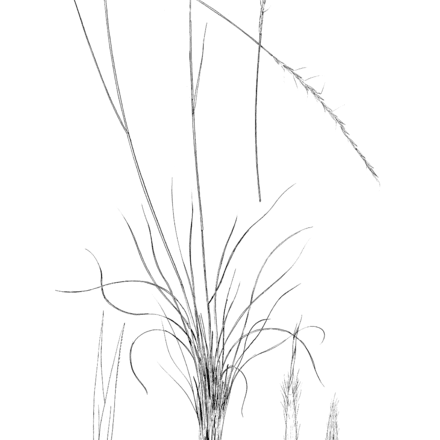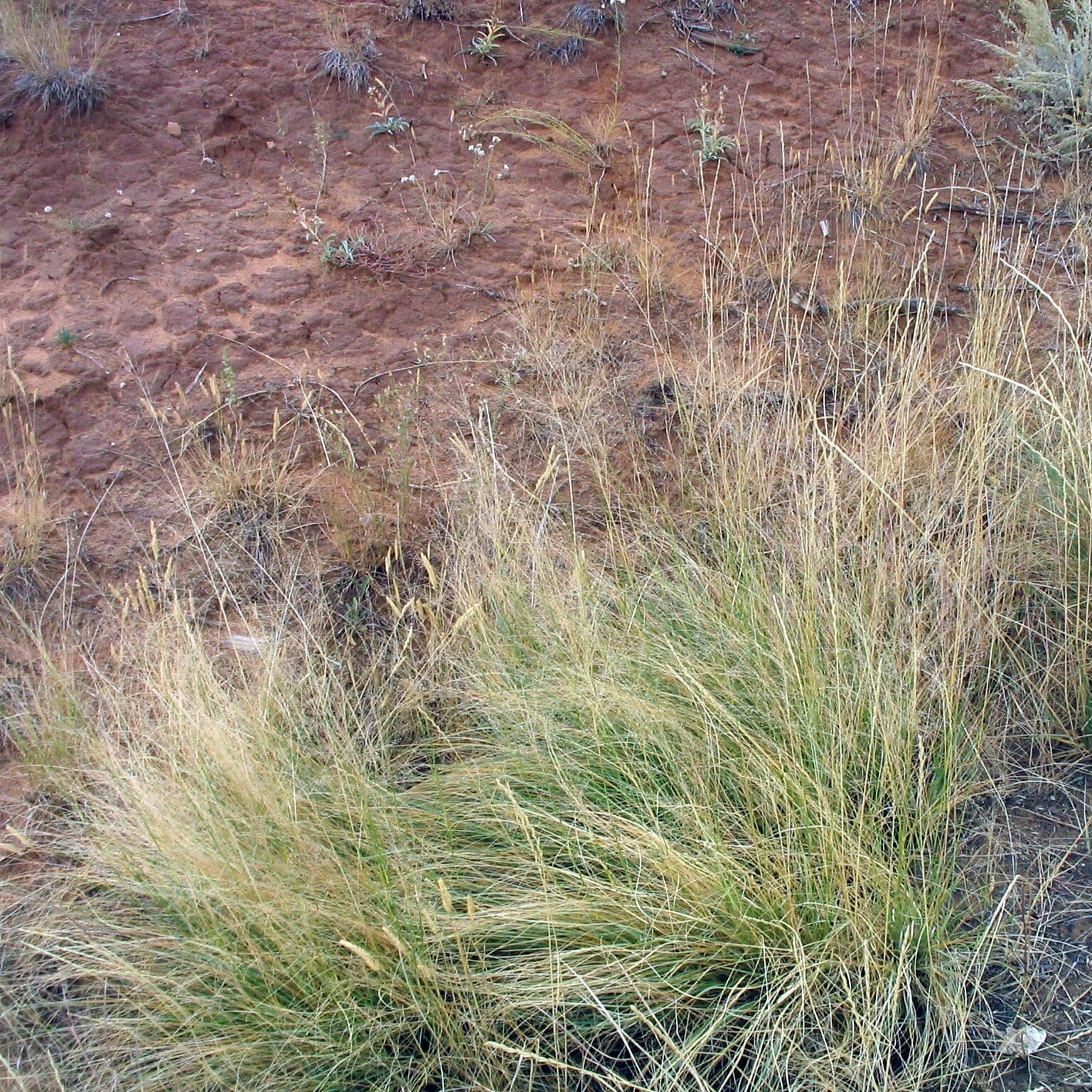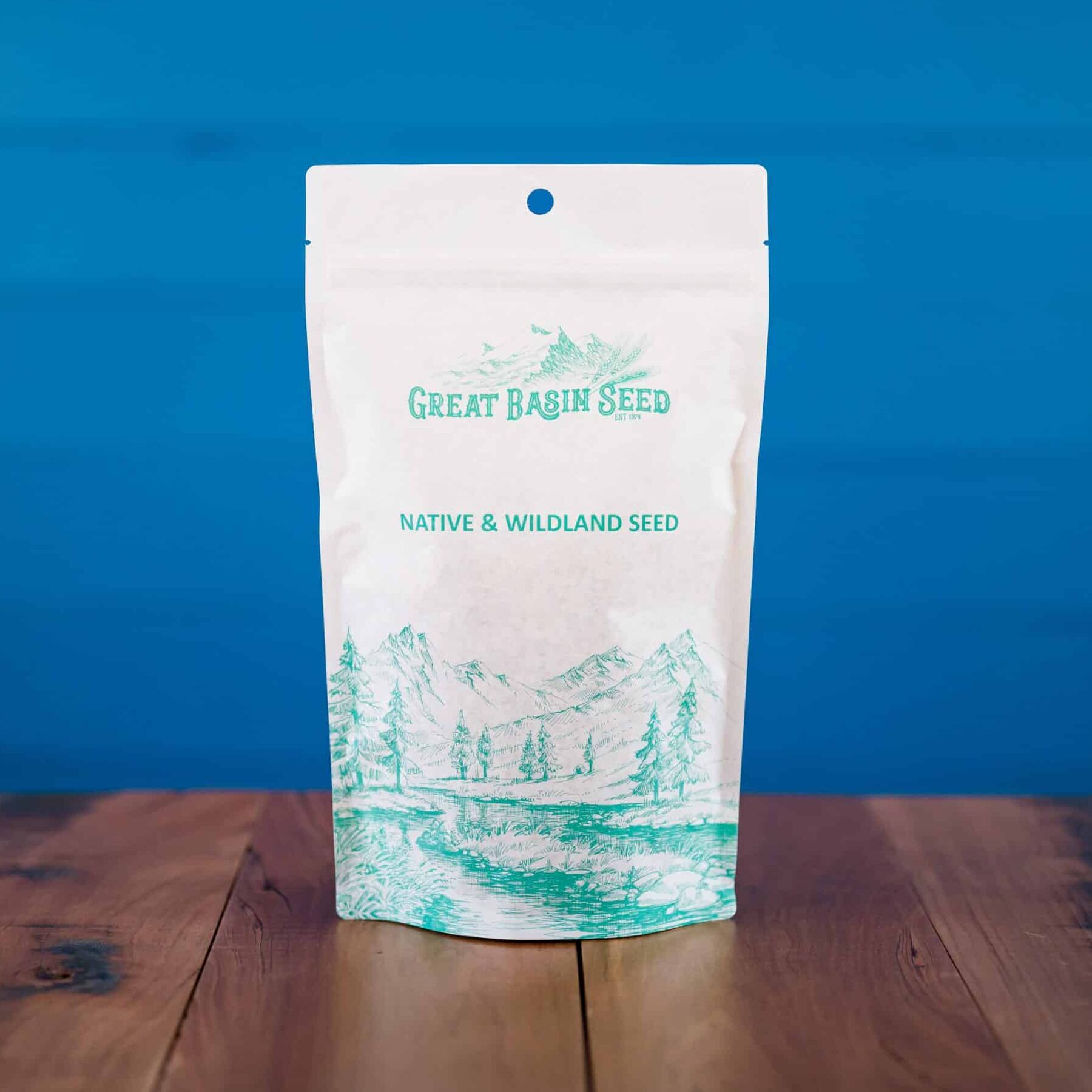Kentucky Bluegrass seed and plant description
Scientific name: Poa pratensis
This widely used turf and pasture bluegrass is used in all ecotypes with many varieties to choose from. Kentucky Bluegrass can grow anywhere from sea level to alpine zones and is very palatable. This seed withstands heavy traffic and grazing, which is one of the many reasons it is so widely used.
***click on the “Quick Plant Facts” tab above for more information.
This plant provides a dense green sod especially adapted for parks and home lawns. Erosion control: Kentucky bluegrass is an excellent erosion control plant because of its dense, vigorous turf forming habit. It can be used as a mix with legumes or other grasses for erosion control in conservation cover, waterways, field borders, heavy use areas and critical areas such as steep banks and pond edges. It is also used alone or in seed mixtures as permanent cover for tree plantings and orchards. Livestock: The species is highly palatable to horses, cattle, and sheep. It produces relatively low yields compared to other pasture grasses, but can be very productive in the Northeast on closely grazed intensive rotational grazing systems. Recreation: Kentucky bluegrass (Poa pratensis) turf is excellent for ball fields and other heavy use areas such as camp grounds, golf fairways, and picnic areas. Wildlife: This plant is highly palatable to elk and is one of the better grasses for deer. The tender plants are grazed immediately after growth begins and the leaves remain succulent and green as long as soil moisture is present. Seeds are eaten by several kinds of songbirds and rodents. Leaves are eaten by rabbits and turkey. Status Please consult the PLANTS Web site and your State Department of Natural Resources for this plant’s current status (e.g. threatened or endangered species, state noxious status, and wetland indicator values). Weediness This plant may become weedy or invasive in some regions or habitats and may displace desirable vegetation if not properly managed. Please consult with your local NRCS Field Office, Cooperative Extension Service office, or state natural resource or agriculture department regarding its status and use. Weed information is also available from the PLANTS Web site at plants.usda.gov. Description Poa pratensis L., Kentucky bluegrass, is a perennial, cool-season, sod-forming grass native to Europe. Seedhead stems are 18 to 24 inches tall, but can be 4 to 6 inches in height when used for intensive grazing. The seedhead has an open shape like a pyramid and produces many small seeds. There are approximately 2,177,000 seeds per pound. Leaves are 6 to 12 inches long and boat-shaped (keeled) at the tips. Leaves are smooth, soft, and about 1/8 to 1/4 inch wide. The plant becomes dormant during the heat of summer, but regains or maintains its green color in fall. Growth starts early in the spring. Tiller buds develop into stems or rhizomes. New rhizomes also arise from nodes of older rhizomes. Most rhizomes penetrate 2 to 4 inches into the soil, but some will go down more than 5 inches. Adaptation and Distribution Kentucky bluegrass is used throughout the U.S. It is best adapted to well-drained, fertile, medium-textured soils of limestone origin. It performs satisfactorily on Robert H.Mohlenbrock USDA NRCS 1989 Midwest Wetland Flora @ USDA NRCS PLANTS poorly drained and heavy-textured soils. Favorable pH level for this grass is 6.0 to 7.5. Kentucky bluegrass grows best in the humid areas. Optimum temperatures for forage production are between 60 F and 90°F. Although the grass is essentially dormant during dry or excessively hot weather, it survives severe droughts. It prefers sunlight but will do well in light shade with ample moisture and nutrients. In the Northeast, seed is present in most hay and pasture fields so Kentucky bluegrass will appear wherever management favors the species. For a current distribution map, please consult the Plant Profile page for this species on the PLANTS Web site. Establishment Seeding: Areas to be seeded should be free of weed seeds, be shaped to well-drained gentle gradients, and have a firm, smooth seedbed prepared. On disturbed areas being prepared for turf, soil conditioners, fertilizer, and soil amendments should be applied as indicated by soil tests and mixed with the soil during seedbed preparation. The seed can be drilled or broadcast and should be covered with soil no deeper than 1/4 to 1/2 inch. Where less than 16 inches precipitation occurs, the area should be sprinkled, keeping the soil moist until the stand is well-established. Planting vegetatively: This plant can be established by cutting sod 2 or 3 inches thick and laying it on a smooth weed-free area. The soil should be sprinkled or otherwise irrigated until the sod has rooted well into the soil. Management Proper fertilization and liming are the most important phases of Kentucky bluegrass management. In pastures, grazing should begin when grass is about 5 inches tall and should not be grazed shorter than 1- 1/2 to 2 inches. Without this treatment, Kentucky bluegrass sod will become weedy and unproductive. When overgrazed, poor root and rhizome development occurs and weeds and shrubs may invade the pasture. This grass is tolerant to horse grazing, but these pastures should be clipped regularly. When used as turf, frequency and height of mowing will vary depending on the specific use. Lawns are mowed to a minimum height of 1-1/2 inches and frequently enough so that no more than 1/3 of the total leaf surface is removed. For critical areas, one mowing per year may be sufficient for weed control and appearance. For disease management purposes, bluegrass should be cut low going into winter, especially where heavy snow cover is expected. In spring, raise the mower deck to promote strong, rapid regrowth with extra leaf surface, then lower to about 2-2 1/2 inches after about the first 6 weeks of the season. Pests and Potential Problems Kentucky bluegrass (Poa pratensis) is susceptible to attack by numerous diseases and insects. Check local sources for the most current information on pests, control and resistance cultivars. Cultivars, Improved, and Selected Materials (and area of origin) Many cultivars have been developed by government entities and private breeders, released primarily for turf seedings. Newer cultivars have disease and drought tolerance. Cooperative Extension Service bulletins list the best selections and their attributes. No cultivars are known to have been developed exclusively for farm use.
Kentucky Bluegrass NRCS Plant Guide and Fact Sheet
Kentucky Bluegrass NRCS Plant Guide and Fact Sheet
PDF version of NRCS Plant Guide and Fact Sheet
Prepared By & Species Coordinator: Tony Bush USDA NRCS Rose Lake Plant Materials Center, East Lansing, Michigan
Helpful Links
Additional information about this product can be found on the academic websites linked below.
Synonyms
Many plants have more than one common and scientific name. We've listed a few of them below.
- Kentucky Bluegrass
- Poa pratensis
- Common Meadow-grass
Quick Plant Facts
| Common Name: | Kentucky Bluegrass |
|---|---|
| Scientific Name: | |
| Plant Type: | |
| Origin: | |
| Lifespan: | |
| Available Varieties: | |
| Min. Precipitation | 18 Inches Minimum |
| Plant PDF File | popr.pdf |
| Root Form | Sodformer |
| Seed Count | 2,175,000 seeds/lb. |
| Growth Height: | |
| Best SowingTime | Spring or Fall |
| Sowing Rate | 2-3 PLS lbs. per Acre |
| Max Sowing Depth: | |
| Growth Season: | |
| Sun & Shade Tolerance: | Full Sun, Shade Intolerant |
| Elevation of Occurance: | |
| pH Tolerance: | |
| Hardiness Zones: |








